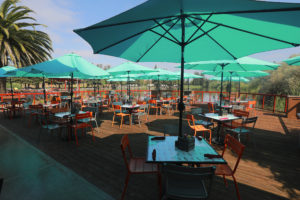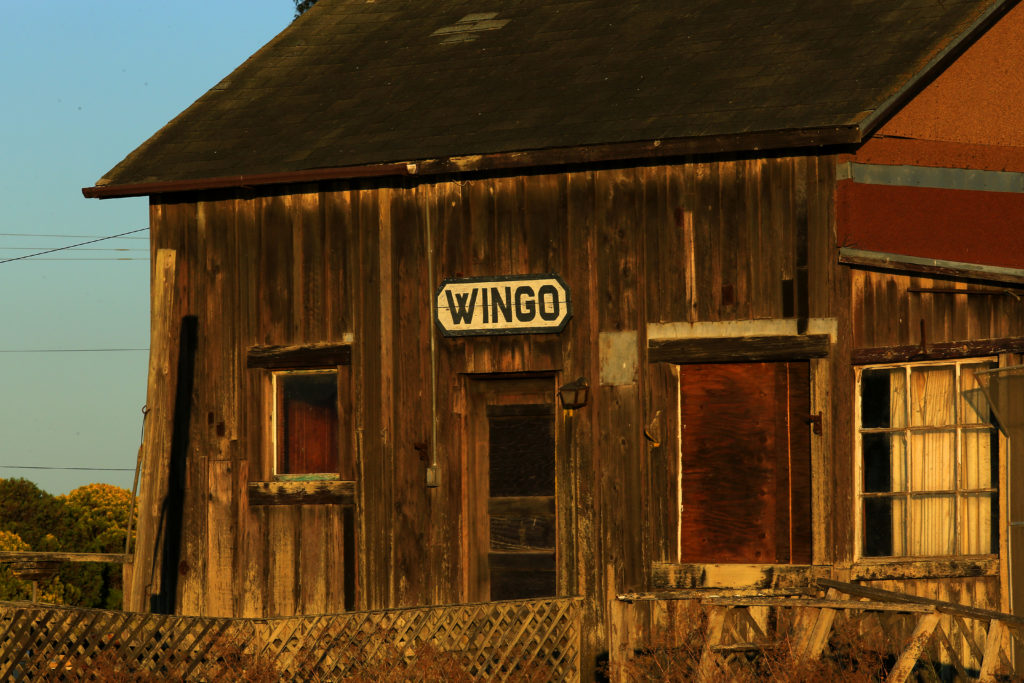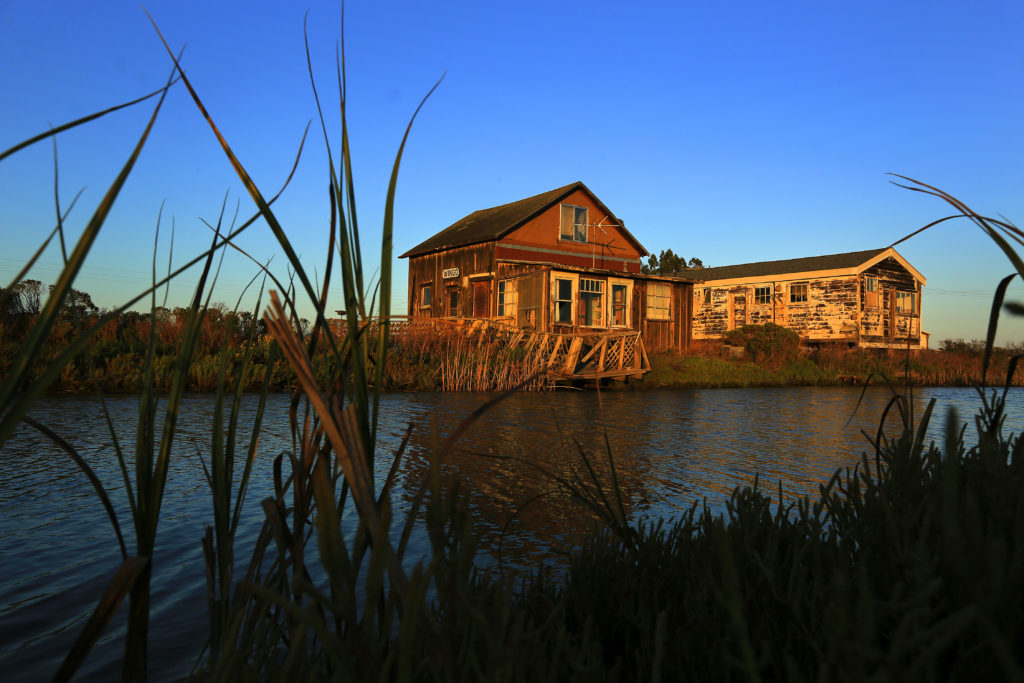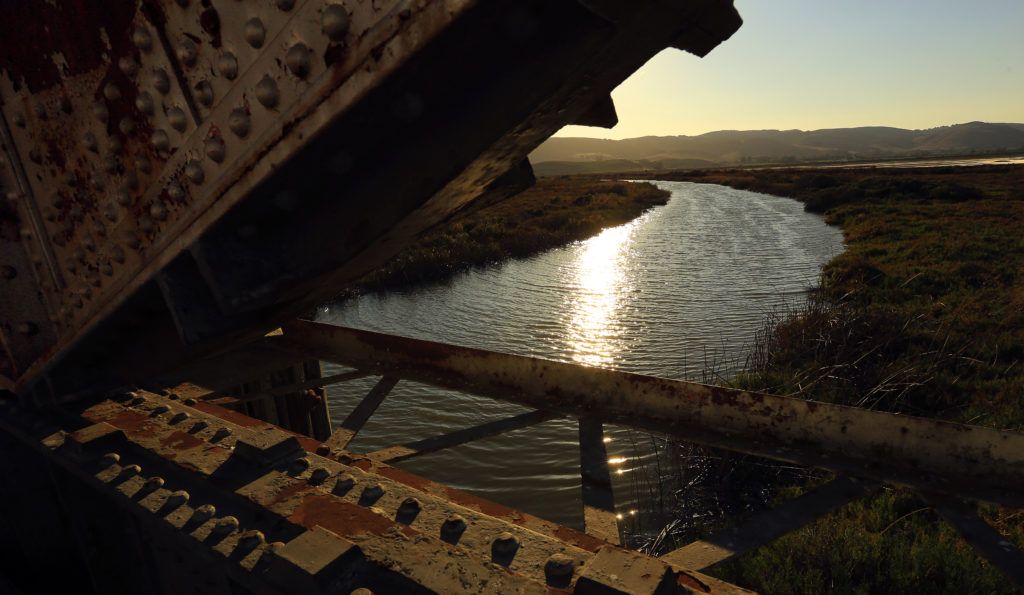This article was originally published in Sonoma Magazine in 2017.
If Wingo is a ghost town, then the woman standing in front of me must be an apparition — in a pink top, black yoga pants and a blond ponytail. Shannon seems like an odd name for a ghost, but you never know.
On the other hand, Mike, the shirtless bald guy in cut-off Levi’s tinkering nearby in his junkyard, might actually qualify as a specter.
Maybe it was the vagueness about his last name: “If you find it out from somewhere else, that’s fine,” he said. “But I’m not the one to give it to you.” Or his story about the last stranger who wandered down the same dirt road I did, standing in the same spot at about the same time of day: “I told him, ‘You’ve got 10 seconds before I put a bullet in your head.’”
Welcome to Wingo, where no one wants you to know their name. Where people come to get away. And where lookie-loos aren’t welcome.
The “town,” as it stands now, is a long-forgotten cluster of cabins, most of them built in the 1800s, and a creaky train trestle along the narrow Sonoma Creek in the middle of nowhere. On a map, picture the tidal marshlands south of Sonoma town, east of Sonoma Raceway, north of Highway 37 and west of Interstate 80.
If you stand on a tuna can, you can see for miles. Except when the winds whip up on the state-owned salt flats to the north and a massive white wall of sand engulfs the abandoned town.

“The dust plumes go up 600 feet high in the air. It’s horrendous,” said Shannon Kiser, who has lived in a house adjacent to Wingo for 20 years. Her husband, Darrell, is a fifth-generation Kiser. His family has farmed 1,500 acres south of Wingo for the past 50 years, now leasing it to hay farmers. She’s the blonde in the yoga pants.
“We get a lot of people who walk in (Wingo) and kind of think they own the place,” she said. “It’s like, ‘Are you lost?’ Nope, they say, just cruising around. ‘OK, well, you’re in my front yard.’”
But back in 1847, Wingo boomed. It was called Norfolk then, a popular stop for the 37-foot paddle-wheel steamer Sitka that ferried passengers from San Francisco to Sonoma, eventually stopping at Sonoma Embarcadero near what is now Schellville, where horse-drawn carriages would take travelers onward to Sonoma.
Duck hunters and fishermen were the most frequent visitors. A 1908 article in the daily San Francisco Call describes a record 44-inch, 36-pound striped bass caught in Wingo.
In 1876, the experimental “prismoidal railroad” arrived, supporting train cars on a monorail, but it never made it to Sonoma. By 1880, a conventional two-rail line took its place. Wingo became known as the spot where the track split in two, one line going straight to Sonoma, the other veering right to Calistoga. By the early 1900s, travelers would leave downtown Sonoma at 6:10 a.m. and arrive in San Francisco at 9 a.m. At about this time, the railroad company renamed the town Wingo, but no one seems to know why.
“Some people say it’s because of how windy it gets here and some say it’s from the Windigo — a mythological beast — but I haven’t delved too much into it,” Kiser said, referring to Native American myth.
Sonoma County historian Arthur Dawson thinks it might have to do with all the winged migrating birds or the mosquitoes that once bred in the marshes before the land was cleared.
Fellow local historian Bob Parmelee heard that it might be an homage to Wingo, Ky., but he likes this theory better: “Someone once said, ‘If you’re down there and there are a bunch of mosquitoes and you slap the back of your neck — wham! Wingo!’”
Newt Dal Poggetto, who still practices law in Sonoma at age 93, would go fishing with his father for striped bass in Wingo in the late 1920s and early 1930s. “I remember watching the bridgetender shining his lantern to signal for the train to stop,” he said. “You’d see guys getting off the train with sardine cans. They’d come to go fishing.”
By 1937, when the Golden Gate Bridge opened, ferry and passenger train ridership began to drop off, and Wingo started to decline. Over the years, as the town became deserted, people still found their way there. In the 1950s, when historian Gaye LeBaron attended Sonoma Valley High School, the town was nothing more than an alibi, she said, when “watching the boat races at Wingo” really meant going to “park” in the dark.
In 1977, four of the cabins, often called “Raccoon Hiltons,” were destroyed in a fire that swept through town. In the 1980s, a rag-tag band of Sonoma bon vivants founded the Wingo Yacht Club Regatta as a lark.
By 1994, an elderly widow named Alice Mann was considered the sole resident of Wingo. She and her husband bought their cabin for $1,000 in 1956. Living alone, she pined for the arrival of swallows every March. She was likely gone by the winter floods of 2003, when 300 tons of debris backed up the creek and flooded the region for miles.
Today, freight trains still roll through Wingo. Kiser’s three kids often scurry up the backyard lookout they call “the fishing tower” to watch the train cars roll by.
The best way, should you dare, to get to Wingo is by taking Millerick Road south from Highway 121, past Larson Family Winery, until it dead ends. Then walk more than a mile down a dirt road until you get to the train bridge and you can see the “Wingo” sign on the old bridgetender’s station.
“Most people have never heard of Wingo and we like to keep it that way,” said Jeremy Heinemann, who grew up in Schellville. He’s spent a lot of time fishing for stripers and sturgeon along the creek. He named his “gypsy blues” band Wingo Moon one night while stargazing from the creek.
The late singer-songwriter and harmonica player Norton Buffalo tried to make Wingo famous at least twice — first with the song “High Tide in Wingo” and then with his sidekick Roy Rogers in their “Ain’t No Bread in the Breadbox” music video filmed in Wingo. Like two itinerant bluesmen wandering the Mississippi Delta, Buffalo and Rogers roll into town as the train pulls away. As they start to play, women and children poke their heads out of the old cabins, running along rickety wooden boards to join in song.
It’s a far cry now from the Wingo of today. On a quiet Monday morning, Mike Verbish (Shannon Kiser offered up his last name) is rearranging the junk in his front yard. A TV inside his cabin is barely audible. Before you can make it to his door, you have to get past a beat-up DeLorean kit car and a rusty Jet Ski balanced atop a speedboat, surrounded by mountains of old truck parts.
At some point, not long after sharing how Bud Lime goes down easy on a hot day, Verbish, probably in his 60s, looks out past the cabins and the bridge to the wide expanse of nothingness and says, “It’s OK here. But if you don’t like quiet, you won’t last long in Wingo.”






















